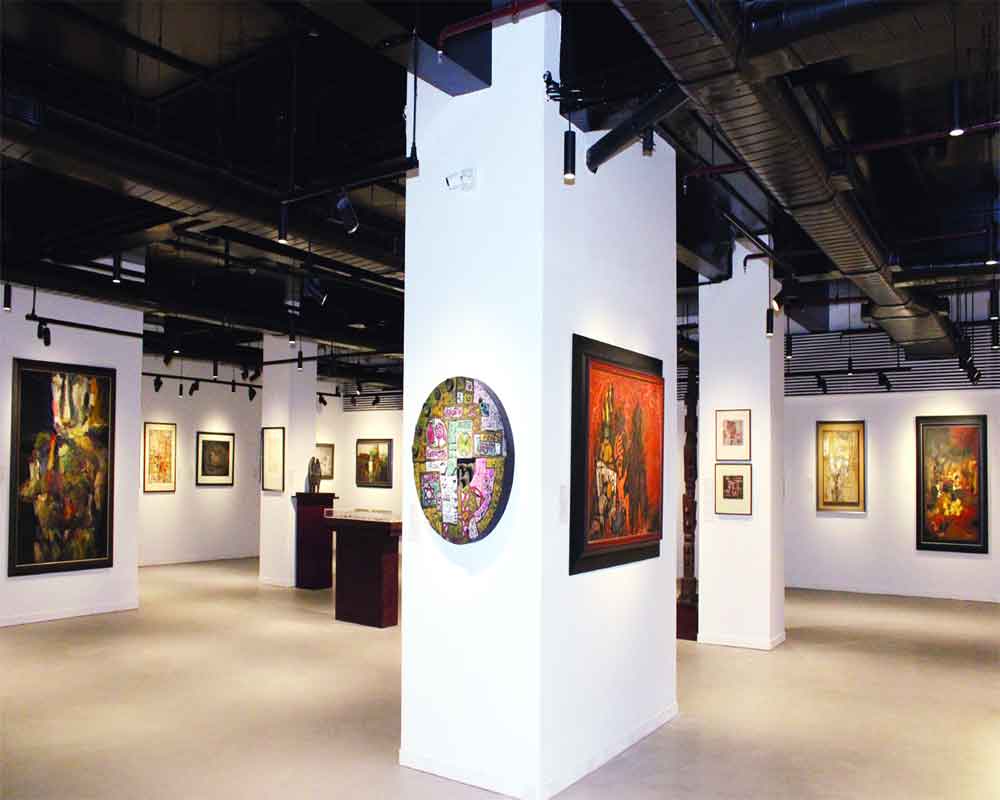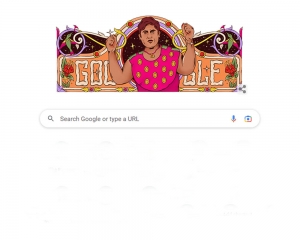Fardeen Kamal, senior manager, art advisory, DAG, walks Saimi Sattar through a show that places all the great artists from the decade under one roof
In the Indian art circle, DAG is known for its enviable collection of artworks, which have been added bit by bit since the gallery started in 1993. However, over a period of time, its location at Hauz Khas Market, a place which is more popular for those looking for a night of pub crawl as opposed to picking up a serious piece of artwork, was no longer in sync with the nature of their business. A switch was imminent, which was effected recently when it shifted to The Claridges and the gallery announced the move by The Sixties Show, which is dotted with the brightest stars in the Indian art galaxy.
So FN Souza is just a little distance away from SH Raza, who is across the aisle from MF Husain. “For this show, we have achieved a form of equilibrium amongst all these names. This show is a way to bring all of these artists on one platform, where they are looked at equally today because they are so significant,” says Fardeen Kamal, senior manager, art advisory, DAG. He goes on to explain that in general, exhibitions in India focus on a particular group whether it is the Bombay Progressives or the Art of Bengal or North Indian artists like Ram Kumar and Sailos Mukherjee or it could be KCS Paniker and DP Roy Chowdhury from the South. But what sets this one apart is that it covers the entire sweep of artists in the decade.
“Sixties was a momentous time because so many things were happening politically within the Indian fabric. All of the conflict and issues, which were prevalent at that time, including economic, impacted art. It was a rough decade and a lot of artists borrowed from what was happening in the society and expressed themselves,” adds Kamal. Interestingly, all these painters were at different phases of their lives. While Raza and Souza were well-established, Husain was painting prolifically. “There were artists like Ambadas Khobragade or AA Raiba who were significant within the context of Indian art but they were not at that level of recognition in the 60s. They were just coming into their own,” he explains.
About 55 artworks are on display by 50 artists and the criteria is not that the painting should be the artist’s most important painting from the era, rather “it has to be a work that somehow embodies the artist’s technical expertise and his/her chosen subject matter up to that point of time as best as possible,” he says.
The painting that immediately catches attention, especially after Kamal announces that the painter is Raza, is La Milne, because it is a work that has no traces of The Bindu, the series with which most people even with a passing interest in art are familiar with. “This is Raza’s second phase called gestural abstraction. Among all of his paintings, this is an important piece of work which is in high demand commercially and is also significant in the historical development of Indian modern art. Before Raza came into this vocabulary, his style of painting was impressionistic, particularly while making water colour landscapes and cityscapes. If one is not familiar with Raza, one would not know because this is stylistically so different,” says Kamal helpfully as we look at unpeeling the layers of art. Raza, by this time, had gone to Paris, completed his education, risen to incredible fame and won the critics prize.
Kamal points out that the works of some artists like Raza are such that if you look at different phases, it is difficult to say that it is the same artist. “In others, there is no drastic change in the visual vocabulary of art though there is growth,” he says.
Moving on, there are three still-life paintings that have been placed side by side but are strikingly different in style and subject matter. The one in the middle is hard to miss for with its sharp edges and a slightly unnerving subject matter, it cannot be portraying anything but Souza’s extreme expressionism. A sharp knife is what is placed closest to the viewer and there is a jagged fork, which further heightens the drama of the painting. But the element which has a shock value is a crow that is perched on the dining table and the viewer is left wondering the purpose and the reason for the same. What makes it different is that traditionally, if we think of still-life, it is painted in a classical manner and looks perfect. “But Souza doesn’t care as he has his own style and wants to express it. One can see the conflict through the angular, sharp lines,” says Kamal.
In complete contrast is another still-life, which is three-dimensional due to the layering in parts. KG Subramanyam’s work exudes an indigenous spirit thanks to the mangoes that occupy centrestage. “The painter might not be at the same level of international acclaim that Souza had reached but this work is extremely important to Indian art,” says Kamal.
The third still-life is by AA Raibaa, which is equally important in the international circuit as he uses charcoal in his signature style to sketch the work. “It is very rare that you would see the three of them together. A viewer needs to examine how the same subject matter can be viewed by different artists. You can really see the technical differences and signature style of each of the artists. The three together help you to compare them,” says he.
Across the room, is another by Souza, from the Head series which is disturbing to look at. “We believe that he may have been portraying sins and priests. The artist often portrayed the hypocrisy and greed of these patriarchal figures. He doesn’t like men in authoritative positions and that is what he is depicting,” says Kamal.
Next up are two works by Avinash Chandra — Mountain of Gold and an untitled one — which are a study in his gradual shift from human forms to focus on buildings. “However, since the shift has just started, one can perceive human figures that are painted like building blocks,” he adds.
There is also Sakti Burman’s Lady with Flowers, which has a very European flavour due to its colour scheme and the dress that she is wearing. “At this point, the artist was living in Paris and his work is influenced by the masters there and displays a classical flourish,” says Kamal and adds, “The painting dates before the time he started experimenting with his marble technique, which used both water and oil colours to create the effect that he is known for.”
Another attractive work is Krishen Khanna’s Rider with its bright orange hues. But what is eye-catching is the intense movement that one can almost feel as the nude figure that sits astride the bike and seems to speed across the terrain.
Satish Gujral’s Unitled work is a big three-dimensional wheel like structure, which reminds one of the chakra in the Indian flag due to its blue shades. But that is where the similarity ends. Though the work is made in the 60s, it is the artist’s expression of Partition where the refugees are trying to put together the remaining bits of their scattered lives. With the smattering of languages that have been written on it, the feeling of people having come from different parts and migrating to altogether different settings is further enhanced.
Of course, when the luminaries of art world are around, one cannot help but display an MF Husain. Two figures with cactus, featured against a blue backdrop, has a two-faced man who seems to be hiding the plant behind him so that the woman does not see it. Whether the artist indicates the man’s prickly past or his propensity to hurt her, of course, depends on the viewer and his/her perception.
Another work by the same artist called Devi has a blurred figure at the centre while two others are looking up towards it. However, whether it is in awe, fear or wonder, is anyone’s guess.
Coming back, one feels overwhelmed by the expanse of the Indian art which covered styles, themes and artistic concerns during the 60s. But all one can say is that we look forward to another decade being put up on display soon.
(The show is on till November 23.)
Photo: Ranjan Dimri


























